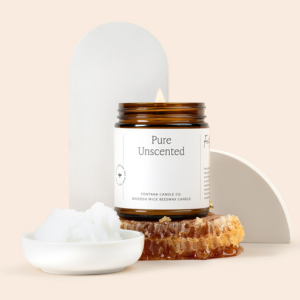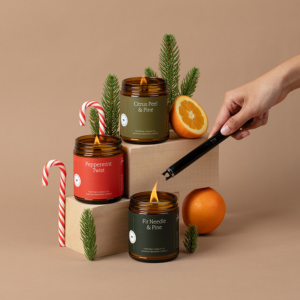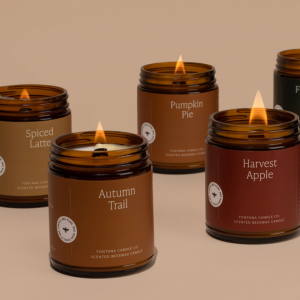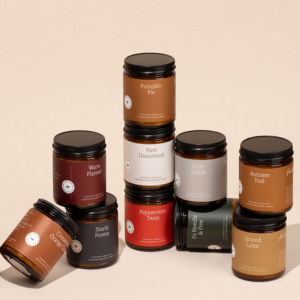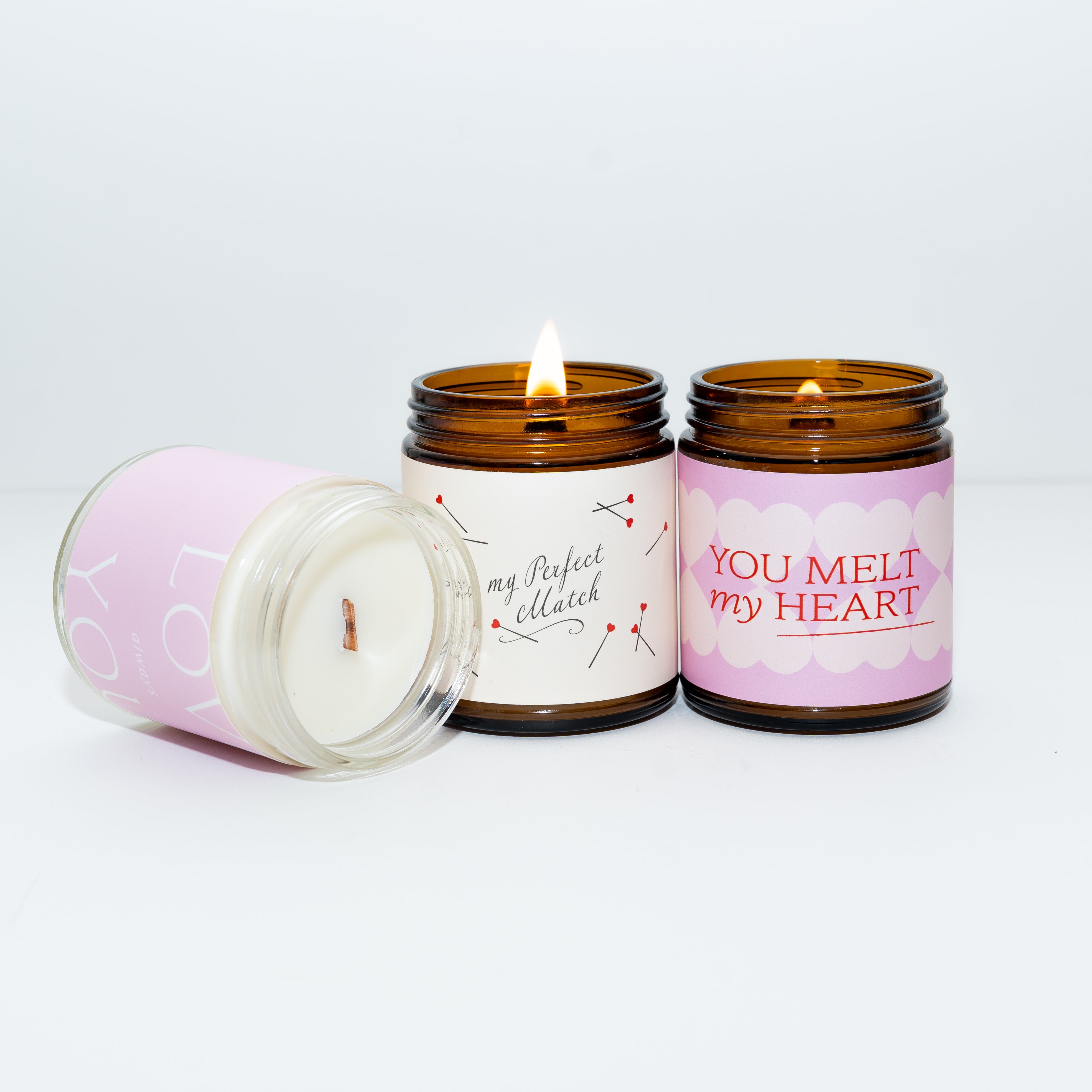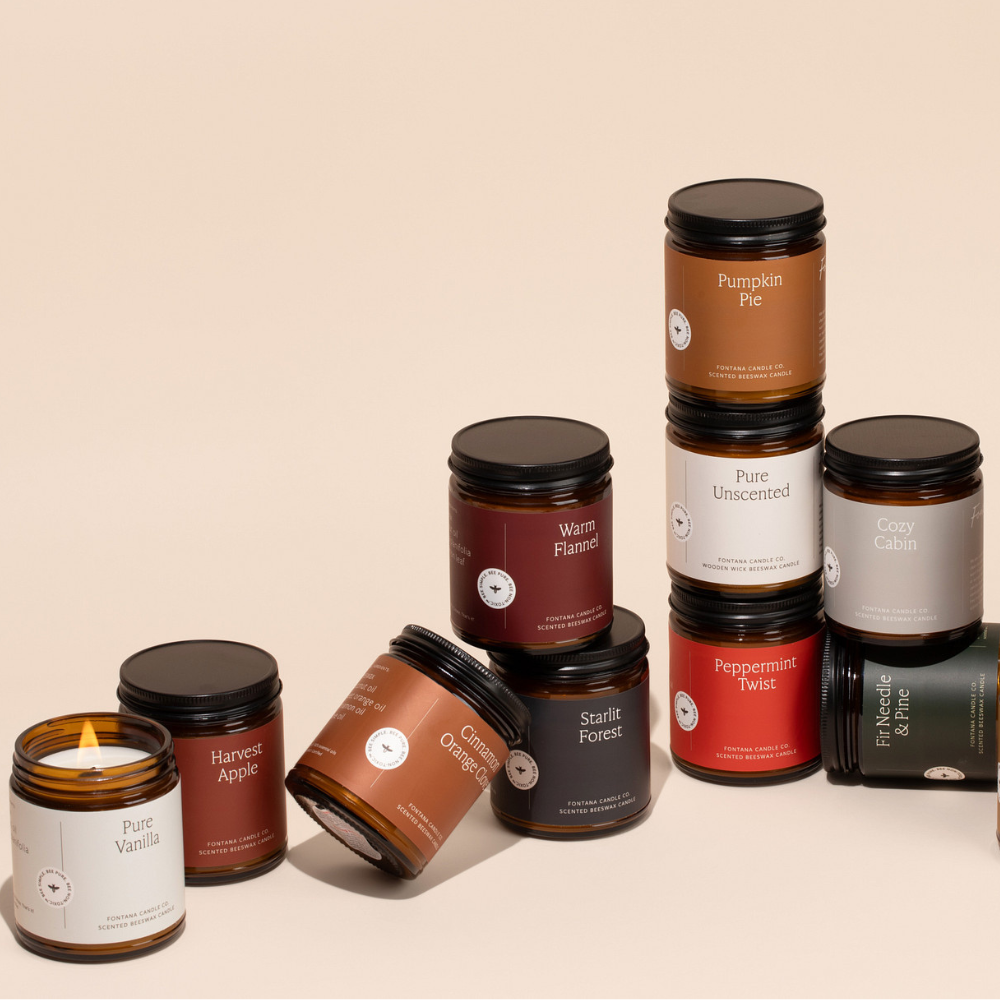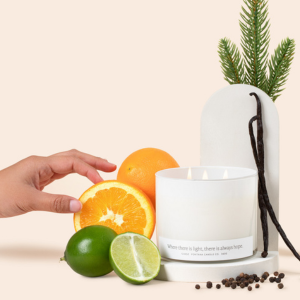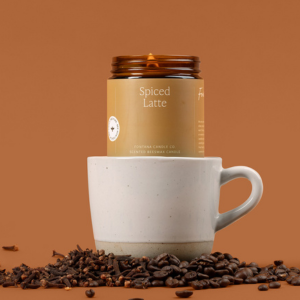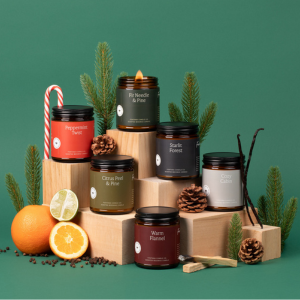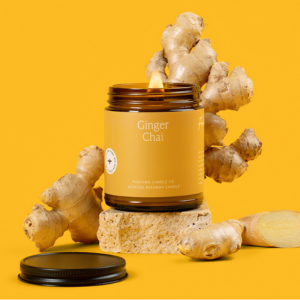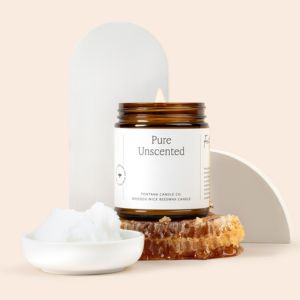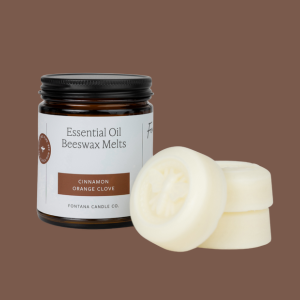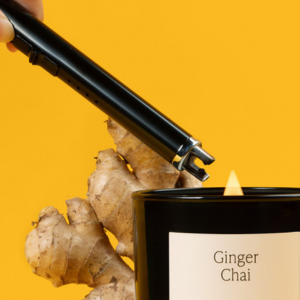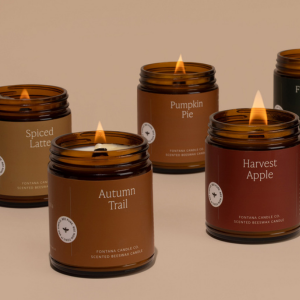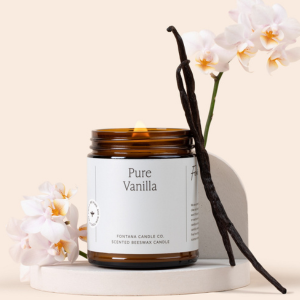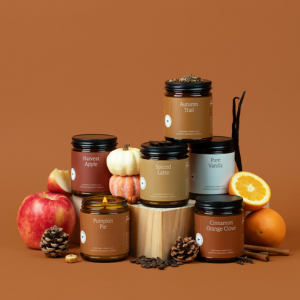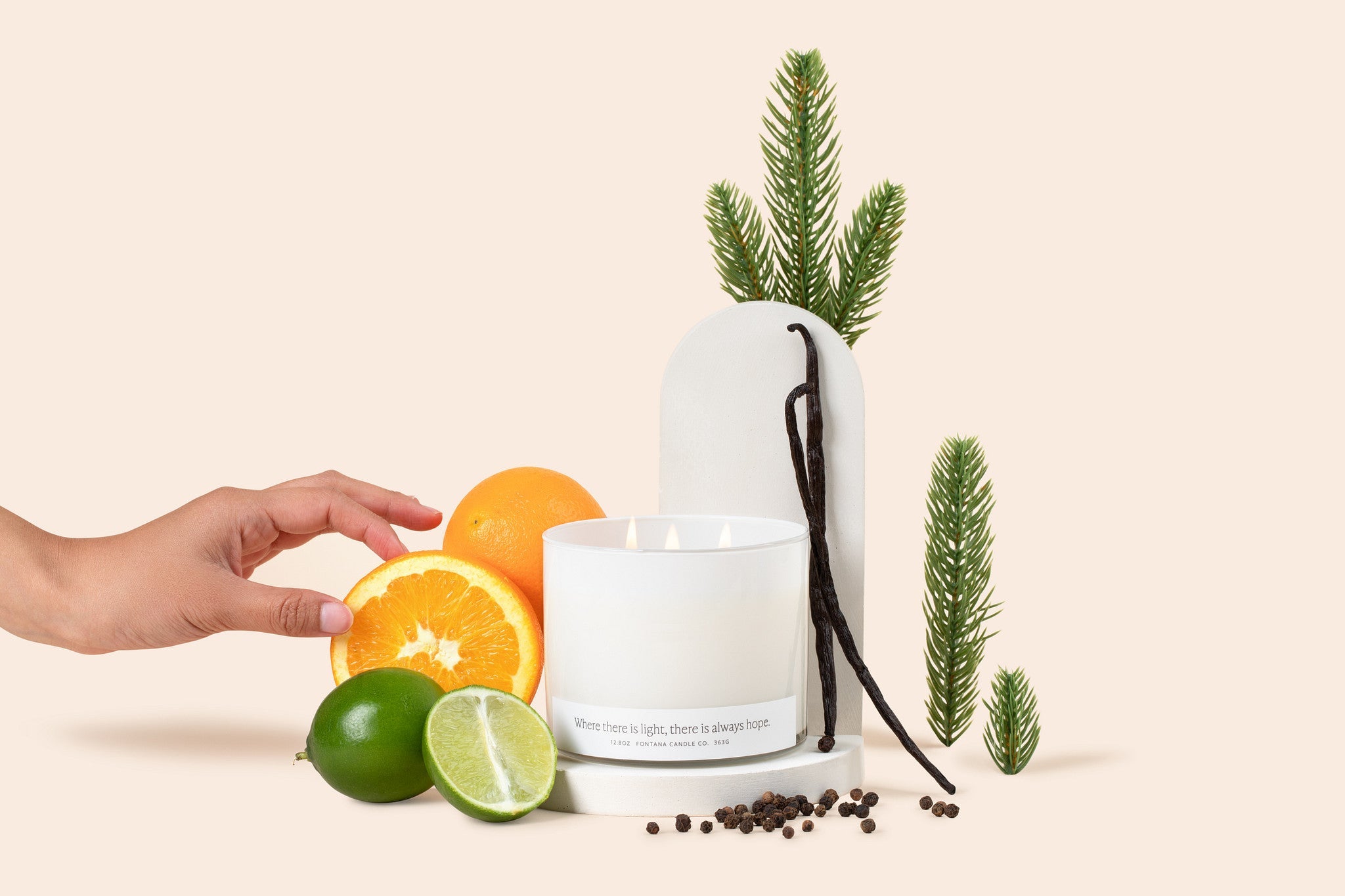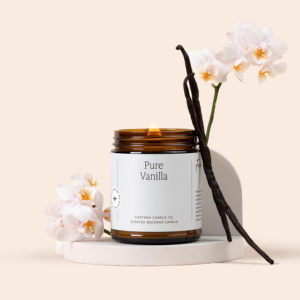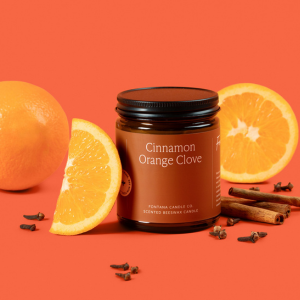A Complete Guide to Non-Toxic Candles

Nobody wants to spread toxins in their home. Yet, the general belief is that candles are non-toxic and completely safe. Unfortunately, many candles continue to contain toxic ingredients and other potential irritants. The trouble is, many candle makers claim their products contain safe or natural ingredients, and it can be difficult to know what ingredients actually are non-toxic and which can still contain harmful substances.
We’ll walk you through the claims being made in the candle industry and give you the tools you need to pick the safest and highest quality candle for your home and family.

The Importance of Transparency
As wellness and clean-living trends continue to grow, the term nontoxic is used at an all-time high in the extremely greenwashed candle industry. There is no strict definition when it comes to the ingredients used in candles. Because of this ambiguity, consumers have a tough time wading through the vague claims being made by candle companies.
Pick up any candle off a store shelf and you will notice one thing: the vast majority of them do not list their ingredients on the label. This is because of the Federal Trade Commission's Fair Packaging and Labeling Act of 1966 (FPLA). The FPLA gives manufacturers “Trade Secret” status for proprietary recipes, formulas, or processes. This means candle makers can keep their formulas, including their fragrances, a secret from the public.
Instead, many candle manufacturers simply claim their ingredients are high-quality with phrases like:
- “Clean burning”
- “Natural fragrance”
- “Phthalates free fragrance”
- “Fine fragrance”
- “Custom fragrance”
Unfortunately, when it comes to actual ingredient transparency, these carefully chosen words do not mean much or guarantee a candle is truly non-toxic.
One of the best ways to be sure a candle maker is transparent, is to look for an ingredients list on their product label or on their website.

How to Choose a Truly Non-Toxic Candle
After reading all of the crafty ways candle companies hide their potentially toxic fragrances, you may feel like all hope is lost. Do not fear, there are ways to find a nontoxic scent that won’t compromise your health!
Look for candles scented with 100% pure essential oils, or “essential oils only.” The company should give as much information about the essential oil as possible, including the extraction process used, i.e. steam distilled or cold pressed. To verify the purity of the oils used, the candle company should be third-party certified or offer GCMS test results for their essential oils.
Avoid Candles Using Non-Disclosed Fragrance
“Fragrance” is a catch-all term for over 3,000 chemicals that can include ingredients like:
- Volatile organic compounds (VOCs)
- Allergens
- Respiratory irritants
- Potential carcinogens
Many widely used fragrances are synthetic oils that are man-made in a laboratory. Many of the ingredients in synthetic fragrance oils are petroleum by-products, known as petrochemicals. According to a report by the National Academy of Sciences (NAS), approximately 95 percent of the chemicals used in synthetic fragrance oils are derived from petroleum.
Ingredients like aldehydes, benzene derivatives, and toluene are all commonly found in synthetic fragrances. These same ingredients can be found in toilet bowl cleaner, paint thinner, wart remover, and insect repellents.
Many of these ingredients are also included on the Agency for Toxic Substances & Disease Registry (ATSDR)’s toxic substances list, with warnings like the following for toluene:
“Breathing toluene vapors in small amounts may cause a mild headache, dizziness, drowsiness, or nausea. With more serious exposure, toluene may cause sleepiness, stumbling, irregular heartbeat, fainting, or even death.”
Without ingredient disclosure, a consumer can not even tell if the candle they are choosing contains toluene or other harmful chemicals.
What About “Natural” Fragrances?
With the popularity of the plant-based movement, natural and plant-based fragrance are a common sight. However, “natural fragrance” is often used as another catchall term. Most companies are not disclosing the ingredients in the natural fragrance, or the processes used to create their natural fragrances.
Even more alarming, in an effort to appear to utilize pure essential oils rather than these synthetic fragrances, some manufacturers will even use trace amounts of essential oils to allow them to claim their candle is “made with essential oils” – even if the fragrance is really 99% synthetic.
Again, transparency is important. If a candle maker claims they use natural ingredients, check the label or their website to see if they disclose what’s actually in their candles.
Shop for truly fragrance free candles from Fontana Candle Company.
Look For Non-Toxic Candle Wax
When people think of toxic candle wax, the first thing that comes to mind is typically paraffin. Compared to other wax types, paraffin is cheap and has a high melting point. This is why many candle makers use paraffin in their products. However, conventional paraffin wax is derived as a byproduct of petroleum, coal, or oil shale. It contains controversial and harmful chemicals such as benzene and toluene.
A 2009 study conducted by South Carolina State University tested various candle waxes for harmful chemical emissions, and concluded:
“The paraffin candles we tested released unwanted chemicals into the air… inhalation of these dangerous pollutants drifting in the air could contribute to the development of health risks like cancer, common allergies and even asthma.”
Are Vegetable Waxes Non-Toxic?
Soy, apricot, and coconut wax are touted as healthier and more sustainable alternatives than paraffin. This certainly can be the case if the waxes are 100% vegetable based; however, mixing these natural waxes with small amounts of paraffin help candle companies keep their costs down, and help to stabilize and standardize their candles.
When looking at vegetable based waxes and health standards, GMO’s can also be an area of concern, especially with soy. According to PacificStandard, more than 90% of the soy in the United States is genetically modified.
Soy is genetically modified to withstand the herbicide glyphosate - the controversial and harmful ingredient in RoundUp (linked to Lymphoma and other blood cancers). This allows farmers to douse their fields and kill the weeds, while the soy remains standing.
However, a team of Norwegian researchers sampled three-kilogram batches of market-ready soybeans grown in 31 Iowan plots in 2014, and found high concentrations of glyphosate in the genetically modified harvests, confirming that the genetically modified plants soak up the glyphosate when sprayed.
Finding A Truly Non-Toxic Candle Wax
If you are looking for a non-toxic vegetable-based wax, 100% organic soy is probably your best bet. We haven’t been able to find a 100% apricot or coconut wax on the market. Especially when it comes to coconut, the wax not temperature stable without some sort of additive. Just imagine a jar of coconut oil in the summer!
From our research, beeswax was the answer to the toxic candle dilemma and is our favorite wax for wellness. Beeswax is a completely natural byproduct of the honeybee, and is one of the oldest known waxes used in the world. It is a favorite ingredient of many industries from cosmetics to pharmaceuticals, and even food.
There are many claims that beeswax releases negative ions while burning, that cleanse and purify the air. Although we have not had any luck finding a research study that solidifies this claim, we still love beeswax for its purity.
Candle Wicks Can Also Contain Toxins
Candle wicks were extremely toxic at one point in history: when wicks were made with lead cores. However, in 2003, the U.S. Consumer Product Safety Commission (CPSC) voted to ban the sale and manufacture of candles with lead wicks. They also banned the import of lead-containing candles from other countries. As a result of this ban, most candle companies stopped using lead in their candles. However, this doesn’t mean that today’s wicks are completely non-toxic.
Non-cored wicks are usually made from cotton and dipped in wax. This causes another ingredient disclosure problem: wick suppliers and candle makers don’t have to specify the type of wax coating the wicks. This means the wax used on the wick may contain petrochemicals.
In addition, while the wick may be made from mostly cotton, this doesn’t mean it’s all-natural. Again, without disclosure of the ingredients, the wick can be made from cotton and other synthetic materials that are harmful when burnt and inhaled.
Wooden Wicks for Wellness
At Fontana Candle Company, we chose to use wooden wicks when creating the most non-toxic candle possible.
Wooden wicks from reputable suppliers are both completely natural and a sustainable option. Although, not all wood wicks are created equally.
It’s important to check for wooden wicks that are made from non-treated wood and are not glued together; it’s difficult to find ingredient disclosures for the adhesives used.
Fontana has chosen to use wooden wicks that are made from untreated cherry and maple wood. The wood is sourced in the United States, from Forest Stewardship Council Certified mills. In addition, for every $100 we spend on wicks, our supplier plants a tree with Trees for the Future, making the wood wick a truly eco-friendly and sustainable option.

The Importance of 3rd Party Certification for Transparency
Whether shopping for candles, food, or household items, bypass the slogans and “green” labels and carefully read the packaging, especially the ingredients.
Candle companies that disclose all of the ingredients in their candles are few and far between, but there are the ones that do (We are one of them!). If you take ingredient disclosure a step further, third party certification truly takes the conflict of interest out of verifying the ingredients and manufacturing of a product. Currently, MADE SAFE® is the only non-toxic certification organization that offers certification for candles.

The MADE SAFE® seal confirms that a household product is free of any and all toxins known or suspected to harm human health, animals, or ecosystems. Certified goods have been thoroughly examined by researchers and scientists to ensure they’re made without known dangerous chemicals, like:
- Carcinogens
- Developmental and behavioral toxins
- Endocrine disruptors
- Flame retardants
- Heavy metals
- Toxic solvents
- Harmful VOCs
Fontana was the first candle to have received MADE SAFE® Certification, first certified in 2019.

Fontana’s Commitment to Clean Candles
Fontana was founded with the mission of creating the cleanest candles possible – candles marketed with no way of greenwashing because they are truly all-natural and non-toxic.
That commitment is what initially led us to choose to create beeswax and coconut oil candles rather than soy, and it’s that same commitment that led us to decide to use only pure, GCMS-tested and third-party certified essential oils for scent.
Each ingredient, from the wick to the wax was carefully selected, because we believe what you breathe is just as important as what you eat when it comes to your health.

